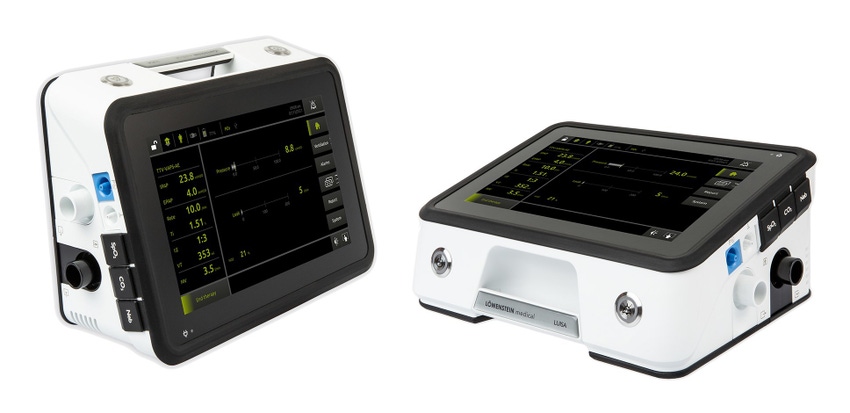The Luisa ventilator from Movair is now available through FDA’s Emergency Use Authorization and may help patients with COVID-19, COPD, chronic bronchitis, or bronchiectasis transition to home settings faster.
October 29, 2021

Increased respiratory patient illness, COVID-19, and product recalls have created a critical need for ventilators in the United States, said David Shockley, Movair’s CEO, in a recent company press release. To help meet this need, the company has launched Luisa, a portable and compact home ventilator.
Luisa is one of the only home ventilators available in the United States that can provide high-flow oxygen therapy as well as noninvasive ventilation, Shockley told MD+DI. He said that both noninvasive and invasive ventilation should be considered for patients diagnosed with COPD, chronic bronchitis, or bronchiectasis, or for post-COVID-19 patients who are unable to be discharged from the hospital safely due to their pulmonary status. “Since Luisa can also provide high-flow oxygen therapy during the day, along with nocturnal ventilation, it may help these patients transition to home faster,” he said.
“High-flow oxygen therapy is a mixture of oxygen and air, delivered at a high velocity to the patient via nasal cannula or through a tracheostomy tube,” Shockley explained. “The high rate of flow overcomes the patient’s inspiratory demands, providing oxygen-rich air with each breath. Gas exchange is improved by moving the air rapidly to the terminal lung zones, the alveoli, where gas exchange takes place: oxygen passes into the blood, while CO2 is removed.”
Shockley said this therapy has proven useful for patients dealing with the effects of COVID-19 by increasing gas exchange, which minimizes patient work to breathe and helps to clear the lungs of excess CO2. “Patients can be supported with a sophisticated mode of noninvasive ventilation during the night and all of the benefits of high-flow oxygen therapy during the day in a single device,” he said. “Particularly in patients with long-term complications, Luisa offers two levels of therapy in one device to optimize respiratory health.”
For patients with chronic and acute respiratory conditions who require long-term ventilation, prolonged compliance is critical. Luisa was designed to help patients keep their active lifestyles by weighing only eight pounds, with a battery run time of up to 18 hours. Eight adjustable settings deliver personalized therapy.
The device has a rotatable 10-in display and flexible connectivity options that enable the patient to integrate the ventilator into lifestyle habits, such as sleeping on a certain side of the bed. It can be programmed in multiple languages.
Shockley said it is recommended that Luisa be operated and maintained by home caregivers and licensed respiratory therapists, but properly trained patients can operate the device. “For example, they could change from their nocturnal mask to the their daytime high-flow nasal cannula, if needed, or change from their nighttime to daytime ventilation mode, if different,” he said.
About the Author(s)
You May Also Like




